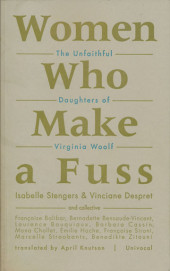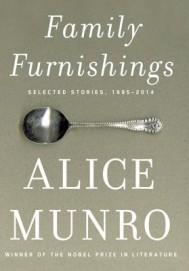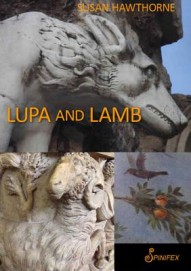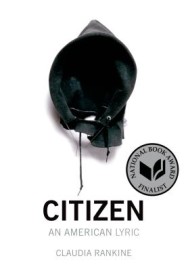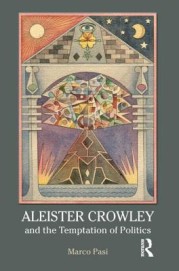 Laura Ingalls Wilder
Laura Ingalls Wilder
Edited by Pamela Smith Hill
South Dakota Historical Society Press ($39.95)
by Wayne Scott
Just tell it in your own words as you would tell about those times if only you could talk to me.
—Rose Wilder Lane, Letter to Laura Ingalls Wilder
My grandmother gave me a copy of Laura Ingalls Wilder’s Little House in the Big Woods when I was eight years old. Up to that time, I had read only comic books popular in the 1970s—Archie’s Gang, Nancy and Sluggo, and Peanuts. To her delight, I not only devoured that account of westward expansion, but all eight books in the series—and returned to them repeatedly over the next few years. How could one get enough of the adventures of the restless, courageous father? Or the schoolteacher mother, and the three girls who worked alongside them on their farms—especially Laura, “Half Pint,” the feisty, loyal, middle daughter? Like many American juvenile readers in the last century, I found the Ingalls family’s stalwart approach to each adversity mesmerizing.
In a 1937 lecture, Wilder said, “I realized that I had seen and lived it all—all the successive phases of the frontier, first the frontiersman then the pioneer, then the farmers and the towns. Then I understood that in my own life I represented a whole period of American history.” As an impressionable reader, I did not distinguish between “nonfiction” and “fiction.” The adult Laura Ingalls Wilder was writing a story about the child Laura Ingalls. In my mind, I was reading a factual account of real people in a real time. My grandmother wouldn’t have given me anything else.
But, of course, it wasn’t factual. Not exactly.
Approximately three years before the publication of the first book in the Little House series, Wilder drafted an autobiography called Pioneer Girl, intended for an adult audience. Newly retired at age sixty-three, she wrote her story in pencil on paper tablets. Pioneer Girl is the unvarnished, first-person account of Wilder’s life between ages two and eighteen, before she contemplated the marketability of her story, before she had had exposure to editors and agents, before her daughter, the well-known writer Rose Wilder Lane, helped shape the story for “the big market.” Now, newly issued from the South Dakota Historical Society Press in an annotated edition, is the original autobiography, complete with misspellings and marginalia, on which the cherished series is based.
This heavily researched and fact-checked volume of Wilder’s first draft allows for a dismantling, and re-examination, of this important piece of literary Americana. Ironically, in one of the early attempts to refashion the story for publication, Rose Wilder Lane re-wrote the opening line as “When Grandma was a little girl . . .” This would be the story that Depression-era grandparents passed down to their children, a time capsule that captured something essential about our cultural DNA. The published stories celebrate resilience, rugged stoicism and the ability to surmount adversity with optimism and perseverance. These values were as important to frontier life as they were to the reading public during the Great Depression, when the book first captured the popular imagination.
But the original manuscript called Pioneer Girl reveals omissions and alterations that complicate these values and shed light on the “constructedness” of Americana, privilege, and whiteness. How Wilder would transform her real story to represent a part of American history is a fascinating study in memory, rationalization, novelization, and the re-fashioning of history, as well as literary marketability.
In 1930, only days after her mother brought the hand-written tablets to her, Wilder’s daughter, Rose Wilder Lane, surreptitiously sent her agent a few hastily typed pages of Pioneer Girl. At that time, the best-selling and internationally well-known author had just built a retirement house for her parents on their property in Missouri. But she had lost significant savings in the stock market crash and was frightened about money. The publishing industry was beginning to feel the ripple effects, and freelance work wasn’t coming at the same steady pace. Debts were mounting.
Though the agent was uninterested, Lane had confidence in the story and her ability to fashion it into something marketable. She worked with her mother on the manuscript for the next two years. Financial pressures, uncertain economic times, an assessment of how a story needed to be transformed for “the big market” each influenced the development of Wilder’s story. Letters exchanged between Wilder and her daughter reveal the tension between the truth of Wilder’s memories and the pressure to make a marketable work. “After all, even though these books must be made fit for children to read, they must also be true to history,” she wrote to her editor daughter. “I have given you a true picture of the times and the place and the people. Please don’t blur it.” The story had to appeal not only to children, but it also had to resonate with the adults, like my grandmother, who would be handing it down to the children they loved.
The Ingalls family was poor, but the published version downplays their economic desperation. In fact, poverty, more than an adventuresome and restless nature, was a potent factor in many of their decisions. When in 1871 Pa chose to uproot his family from Kansas, it was because land parcels cost more than he could afford. A few years later, after locusts destroyed his crop, he had no means to buy food and requested relief supplies from the government, an early form of agrarian welfare. Later, during a cold winter, his daughters stopped attending school because the family couldn’t afford warm clothing. When grasshoppers destroyed another crop in the mid-1870s, real-life Pa gave up. He moved east to be closer to family, a move that the published story omits because it did not fit with the spirit of the westward expansion. (In the novel, Pa takes the family west to Dakota to settle another claim.) By downplaying the economic hardship in Wilder’s fictionalization, she contributes to the mythology of a pioneering spirit motivated by adventure and indefatigable optimism.
My grandmother’s father had died in the Influenza Epidemic of 1918, leaving a wife with four young children. My grandmother’s twin sister died from scarlet fever when she was three. Pictures of my grandmother’s mother from this time show a stoic woman, lips tightly pursed. My grandmother, and many of her generation who endured similarly tragic experiences, would not have much interest in handing down a book that dwells on overwhelming hardship.
The real-life Ingalls family experienced tragedy, yet Wilder minimized both the facts and the emotional reality of their losses. “A touch of tragedy makes the story truer to life,” she told her daughter, “and showing the way we all took it illustrates the spirit of the times and the frontier.” Wilder and Lane argued about how to incorporate her sister Mary’s illness and eventual blindness into the story. Both feared the tone becoming too dark for middle school readers. Wilder said she did not want the story to become “a recital of discouragement and calamities.” Mary’s blindness does make it into the published story, but Mary—stoically, almost beatifically—bears her lot.
Not so with Laura’s brother Freddie. In the published books, Pa heads a family of women. But Wilder had a brother, Charles Frederick “Freddie” Ingalls, who was born when she was eight years old. This episode of the family’s history receives curt attention in the draft autobiography, where Freddie becomes sick and “one awful day he straightened out his little body and was dead.” When the family moves again, Wilder confides in her draft, “We felt so badly to go on and leave Freddie, but in a little while we had to go on to Iowa.” Children died with alarming frequency in the nineteenth century. Their vulnerability was an undeniable fact on the rough frontier with constrained access to physicians. But the trauma of Freddie’s loss does not fit with the series’ tone of optimistic resilience, so he and his passing are omitted from the series.
One of the most deeply troubling revisions involves the family’s relationship with Native Americans, depicted with wariness and fear. In Pioneer Girl, Wilder writes: “Indians often came to the house and asked for anything they liked.” The published works amplify this portrayal of Native Americans as an aggressive intrusion; throughout the series, Indians are depicted as “other,” enemies to hearth and home. In Little House on the Prairie, Wilder wrote about the land the family first settled: “There the wild animals wandered and fed as though they were in a pasture that stretched much farther than a man could see, and there were no people. Only the Indians lived there.” A full seventeen years after the book’s publication, a reader complained about the dismissive comment, which Wilder admitted was “a stupid blunder of mine.” She changed the wording.
What really happened on the frontier upends the mythology: in 1869 the real-life Ingalls family participated in an illegal movement to settle what Wilder called “Indian Territory,” in southeastern Kansas. Technically “squatters,” they were part of an influx of intruders, many displaced by the American Civil War. The frequent visits from Indians, depicted as threatening and frightening in the published books, were actually commonplace. The White settlers were unwelcome trespassers, but because the Osage were impoverished, they tolerated these incursions as a kind of tenant relationship and felt entitled to take food and tobacco.
When the Ingalls family moved in 1871, fictional Pa rants, “If some blasted politicians in Washington hadn’t sent out word it would be all right to settle here, I’d never have been three miles over the line into Indian Territory.” In fact he was fourteen miles west of the boundary, a nice geographical metaphor for the degree to which Pa and his writer daughter stretched the truth of the family’s intrusion. Their settlement represented an aggressive colonialism that trampled the indigenous people’s right to remain in peace on their own land, an extension of the U.S. government’s betrayals and callous disregard for the treaties they forced upon the tribes. In the published account, Pa tells Laura, “When white settlers come into a country, the Indians have to move on. The government is going to move these Indians farther west, any time now. That’s why we’re here, Laura. White people are going to settle all this country, and we get the best land because we get here first and take our pick.” It was a tidy rationalization.
When I first heard about the impending publication of Pioneer Girl, I was excited to think there was another beat in the finite series, which I’d already read so many times. But this richly annotated volume, superbly edited by Pamela Smith Hill and a team of scholars, is not an addition to the beloved American classics as much as it is a thoughtful and unsettling dismantling.
The multifaceted real lives of the Ingalls family—their wrenching poverty, the enormity of losses they faced on the frontier, and the encroachment upon and displacement of the Native Americans who preceded them—complicate a simplified vision of the western frontier. Pioneer Girl maps the paradox of American identity, which I recognize in my grandmother’s long life and which I know in my own: that our history’s wounds—minimized, compressed, denied in a kind of hardscrabble centrifuge—come from the same source as its creative resilience, its tragic bravado.
Click here to purchase this book at your local independent bookstore

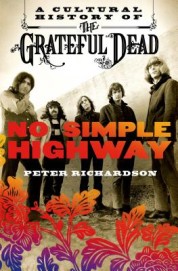 Peter Richardson
Peter Richardson

